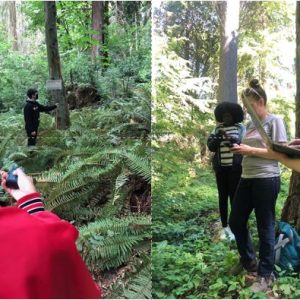Since 2013, volunteer forest stewards and scientists with the Friends of Seward Park have monitored and researched the massive sword fern die-off in Seward Park’s old-growth Magnificent Forest. We have gathered evidence that supports an unknown pathogen as the cause, and not herbivory, drought, or climate change, at least directly. We have investigated how to promote recovery under the dense forest canopy. Similar fern die-offs have since been observed at scattered locations around the Puget Lowland, suggesting a regional problem. The Magnificent Forest also has dying hemlocks, and faces other urban challenges such as invasive species, overuse, and climate change.
Volunteers can only do so much, and we feel professional scientific research is needed to understand and promote forest health. Seward Park is conveniently located to universities and forestry programs that could help research solutions, and serve as a model of citizen-initiated forest science. Our detailed documentation of the natural and human history of the Magnificent Forest and its decline can serve as a baseline for future studies. We hope to raise funds to support graduate or post-doctoral research into the die-off and forest health.
A number of project resources are linked below:
Seward Park Sword Fern Die-Off Blog
What’s Killing Our Sword Ferns?
Sword Fern Disease Transmission Project Report (pdf)
Sword Fern Microbiome Project Preliminary Findings (pdf)
Ecophysiology Report 2018-2019 (pdf)
A Possible Symptom of the Die Off (pdf)







